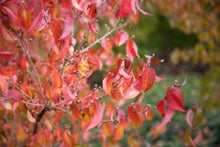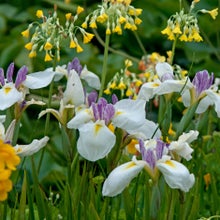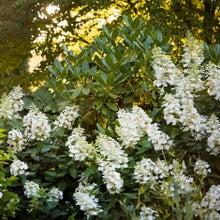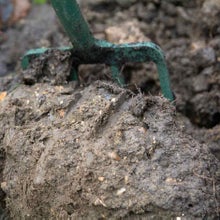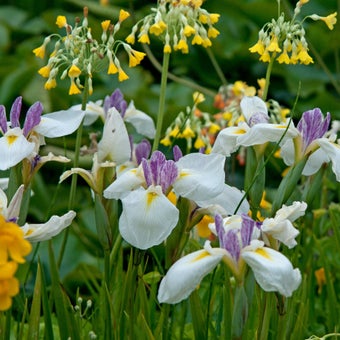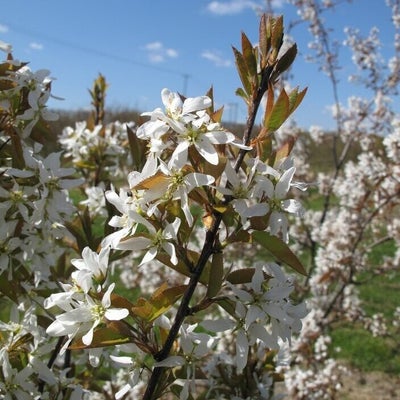
Quick facts
Top five tips for gardening on fluctuating and dry soils
Create summer shade
Mulch plants and grow groundcover
Visit gardens for inspiration (see end of page for recommendations)
Experiment – not all ‘suitable’ plants will work in all gardens
Make mounds and dips to vary conditions
Planting for sustainability and resilience
Choosing the right plants for soil that is wet in winter and dry in summer is becoming a necessity. Constant watering in dry spells is time-consuming and demanding of water resources. Conversely, losing plants in conditions is costly and disheartening. Our guidance can help you plant for the conditions your garden offers.
Soils, climate, and growing conditions are endlessly variable, so the plants on our lists may tolerate these challenges but may not thrive as well as those in ideal conditions.
Frequently asked questions
How wet is too wet?
Wet soil may be saturated much of the winter or may just flood occasionally. The water could remain for a few days or longer. Soil that never drains will not grow plants as there is no oxygen in the soil structure. Shorter periods under water mean some plants will still survive.
Should I just plant a bog garden?
If the water table is high, or the land is low-lying, it may not dry out completely in summer. In this case, a bog garden may suit your garden better.
What can I do about the puddles on my lawn?
You may find our page on waterlogged lawns useful.
How do I prevent waterlogging on my clay soil?
Clay soils can result in these extremes. Follow our tips below on managing clay soils.
Will adding gravel to the soil help improve drainage?
Unfortunately, no. If the water table is high, only installing drainage will help. To assess your drainage, have a look at our advice below on wet soils and installing drainage.
So, perhaps a rain garden would be a good idea?
Yes, a rain garden captures and temporarily stores rainwater. A swale is narrower and can carry water to a rain garden. To manage sudden, substantial amounts of water running off buildings to hard surfaces, they are ideal. Find out more about creating a rain garden.
Can plants help to reduce flooding?
Planting trees and shrubs such as willow will not be helpful in draining areas that are wet in winter, because they are . Evergreens will photosynthesise slowly in winter, so will have some impact, though this is not likely to be significant.
Top tip
Avoid plants that are on the tender side – wet soils plus cold can make them more vulnerable
What else could I do?
You could make raised beds. They may only need to be 20cm or in height so that roots are raised above the surrounding water table. The ideal height depends on what you want to plant.
Our plant selections for wet and dry soils offer a wide range of suggestions:
What to consider when planning and planting
There are many plants that will tolerate dry soil or occasional waterlogging. Since plants are rarely highly tolerant to both extremes, you may need to experiment in your specific conditions. You can give plants the best chance and increase choice by planning and planting carefully.
There are a few steps you can take when choosing, planning and planting
- Be aware that some cultivars of plants may not be as resilient as the species
- Some plants need some shade in summer to give them their tolerance
- Consider changing the topography of the garden by creating low hills and depressions, where you can plant more specifically. This is a rain garden in its simplest form
- Plant in autumn – roots are still on the move and can establish before winter wet or summer drought
- Don’t risk more tender plants if your garden is cold as well as wet. Check hardiness ratings when selecting
- Choose for the prevailing conditions
- Use plants that self-seed, such as aquilegia, foxgloves and verbena

Verbena bonariensis grows on most soils; although short-lived, it self-seeds so gives a certain permanence
Planting and aftercare
- Add organic matter to the area before planting. This is the single most important element of preparation, whatever your soil type, as it improves soil structure by creating air spaces. Use garden compost or well-rotted farmyard manure in preference, or a dedicated if this isn’t possible. Always avoid spreading bagged potting on beds and borders, as this is designed for use in containers and won’t be as effective as with garden compost or other suitable organic matter
- Work off boards when borders are wet
- ‘Mound plant’ trees. By planting onto a mound 25cm (10in) at its middle, drainage can be greatly improved. To make watering easier in summer, especially in the establishment year, ensure the top of the mound is slightly saucer-shaped
- Use surface mulches to keep moisture in the ground for summer. If organic mulches (garden compost, well-rotted manure or a dedicated soil improver) are washed away, try using gravel
- Water well and regularly for one or two summers to establish plants before expecting them to survive drought. Specimen shrubs and trees will need a couple of years watering in summer
- Once plants are established, water only when absolutely neccessary – “Train your plants to be drought atheletes” (Janet Manning – RHS Water Reduction Officer)

Further information
Over winter 2023/4, we carried out interviews with garden staff and other professionals at RHS Gardens, the National Trust, RHS partner gardens and private nurseries and gardens.
We asked which plants cope best with wet winters and dry summers. The criterion was that plants are not watered in summer, or only minimally watered to keep them alive. They provided lists of plants along with background to their growing conditions.
Our recommendation pages are the results of this work, desk research and input from our Environmental Horticulture team. The lists complement the field research and lab-based work undertaken by the RHS Science teams.
Gardens to visit with seasonally wet and dry soil
Ballyrobert Gardens, Ballyclare, NI - an RHS partner garden
Birkheads Secret Gardens, Newcastle-upon-Tyne - an RHS partner garden
Dunham Massey, Altrincham, Greater Manchester - National Trust
Gunby Estate, Hall and Gardens, Spilsby, Lincolnshire - National Trust
Knoll Gardens, Wimborne, Dorset - an RHS partner garden
Mitchmere Farm, Stoughton, Hampshire - National Gardens Scheme
Sissinghurst Castle Gardens, Kent - National Trust and RHS Partner Garden
To learn more
Cameron, R, King, C. 2012. Flooding tolerance in four ‘Garrigue’ landscape plants: Implications for their future use in the urban landscapes of north-west Europe? Urban and Landscape Planning. Volume 107, Issue 2: 100-110
Tree Species Selection for Green Infrastructure - A guide for specifiers - Dr.Andrew D. Hirons and Dr. Henrik Sjöman
Niinemets U, Valladares F. 2006. Tolerance to Shade, Drought and Waterlogging of Temperate Northern Hemisphere Trees and Shrubs. Ecological Monographs. 76:4: 521-547


